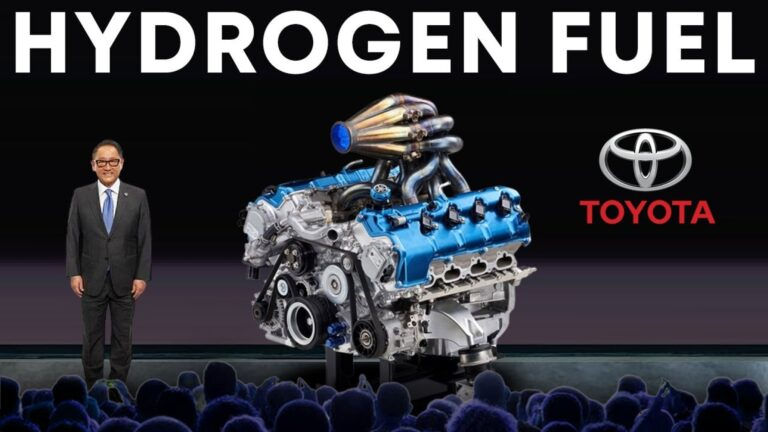Toyota believes in offering its customers several zero-emission options so that they’re not limited to one fuel type. The prototype Corolla Cross Hydrogen Concept is a sign of what’s to come in terms of the Japanese automaker’s hydrogen combustion offering and after being tested on the racetrack, it’s likely to be a solid player in the market.
Toyota went all-out on the hydrogen Corolla Cross
Toyota has a full stable of zero-emissions options that include battery electric, plug-in hybrid electric, hybrid electric, and hydrogen fuel cell models. Now, a hydrogen combustion option is being developed in the form of the Corolla Cross Hydrogen Concept after the technology was tested under intense Japanese motorsport conditions.
Toyota chose the GR Corolla’s 1.6-liter, three-cylinder turbo engine to base the hydrogen combustion model on and modified it with the high-pressure hydrogen direct injection engine technology that was developed and fine-tuned on the motorsport track. The hydrogen tank is the same one used for the Mirai, Toyota’s hydrogen fuel cell model.
Despite the racing conditions the Corolla Cross was tested under, it’s a perfectly comfortable road vehicle for drivers and passengers, fitting five people with generous space left over for luggage.
Benefits of hydrogen combustion
There are several key advantages of hydrogen combustion systems:
Hydrogen tanks are quick to refuel.
Existing engine technology can be easily adapted for hydrogen combustion.
Hydrogen models don’t require elements in short supply like nickel and lithium.
The only emission is water vapour, zero carbon.
Hydrogen can be produced through renewable sources and electrolysis.
Hydrogen has a high energy density, meaning more energy is produced by weight than other kinds of fuels.
Hydrogen Corolla goes through testing at Fuji Super TEC 24 Hours Race
Toyota wanted a testing platform that would accelerate hydrogen development, and the Super Taikyu endurance races in Japan were ideal. The souped-up, hydrogen-powered GR Corolla the team used to compete in the races was customized with several new features, including an extended cruising range created by a custom-shaped tank and enhanced liquid hydrogen pump durability. Here’s a breakdown of the testing model:
Hydrogen pump durability: To get around parts wearing out quickly, Toyota included a dual-drive crankshaft mechanism. The adjusted application of torque translated into a more balanced piston action, increasing durability significantly.
Custom-shaped tank for increased range: The liquid hydrogen tank design for the Fuji races was oval, compared to the cylindrical shape of the previous version. This doubled the load of hydrogen because the space was used more efficiently, which extended the range.
Automated CO₂ capture technology: In the races, mechanics didn’t have to switch the absorption and separation processes manually as an automated mechanism was integrated.
Toyota completed the 2022 season with the GR Corolla H2 and it was a total testing and development success: torque increased by 33%, combustion power went up by 24%, the range was extended by 30%, and refueling went from five minutes to 90 seconds. These leaps in performance put the hydrogen system on the level of standard gasoline models, meaning it was ready for the next step for commercial manufacturing.
Complications with hydrogen engines that Toyota will need to overcome
Other green energy options like EVs have some advantages over hydrogen, so engine developers looking in this direction have a number of tricky factors to overcome:
Hydrogen fuel pumps wear out quickly, which makes the system inefficient. Lubricants can’t be used because they contaminate the fuel.
Pump sealing is difficult because conditions are difficult to maintain under extremely cold temperatures.
Large fuel tanks are needed for an acceptable range that have to be accommodated in the design of the body at the expense of space.
Burning hydrogen is less efficient compared to the amount of electric power needed to charge a battery. Hydrogen combustion efficiency is normally between 20% to 40%, whereas electric power sits at around 77%.
Despite evidence pointing to electric power as the way to go in the fight against carbon emissions, Toyota is still confident that the development of hydrogen engines will bear fruit.


